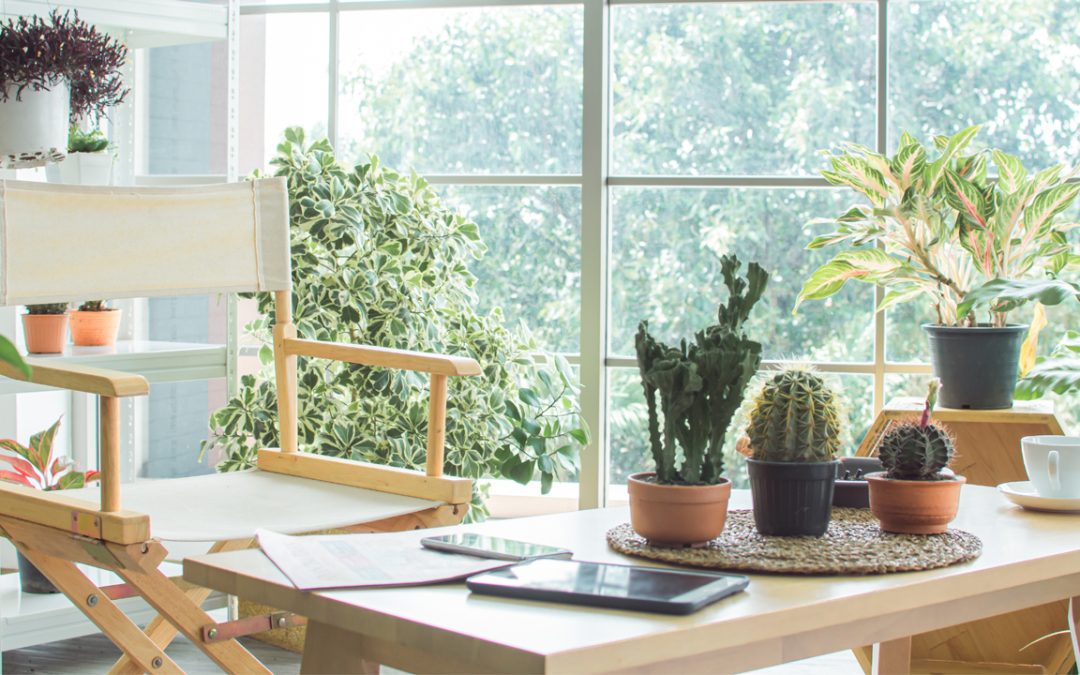In the fast-paced world of contemporary interior design, a trend that stands out for its timeless appeal and holistic benefits is interior plant design.
Beyond the traditional elements of furniture and decor, integrating nature’s greenery into living spaces has become an art form and a design philosophy known for its profound aesthetic and holistic principles.
The Essence of Interior Plant Design
Interior plant design goes beyond merely placing a few potted plants in a room. It embodies a profound understanding of natural elements, a seamless integration of greenery, and a commitment to creating environments that resonate with the innate human connection to nature.
At its core, it’s about crafting living spaces that promote well-being, foster creativity, and offer a sanctuary of calm amidst the hustle and bustle of modern life.
Natural Materials and Harmonious Balance
One of the foundational principles of plant-centric interior design is the use of natural materials. From wooden furniture to stone accents, these elements not only complement indoor plants but also contribute to a harmonious balance.
The combination of natural elements with the lush green foliage produces an aesthetically pleasing atmosphere that feels grounded in the earth.
Biophilic Design: A Conceptual Framework
At the heart of plant-centric interior design lies the concept of biophilic design. This framework emphasizes the inherent human need for connection with nature. By incorporating this philosophy, designers aim to bring the outdoors inside, reinforcing the bond between inhabitants and the natural environment.
The biophilic approach can involve large-scale installations such as living walls or smaller, more intricate touches like botanical artwork.
The Pivotal Role of Air Quality
Beyond the aesthetic appeal, interior plant design plays a pivotal role in enhancing indoor air quality. Plants act as natural air purifiers, absorbing pollutants and releasing oxygen.
This not only contributes to a healthier environment but also aligns with the growing awareness of the impact of our surroundings on overall well-being.
Create a Sense of Peace and Calm
Amid the digital age’s constant stimuli, interior plant design offers a retreat—a place of refuge. The gentle rustle of leaves, the play of natural light, and the earthy scent of soil all contribute to a sense of peace and calm.
This immersive experience is carefully curated through the strategic placement of plants, allowing individuals to reconnect with the soothing elements of nature.
Appeal Environments for Mental Wellbeing
Studies have shown that exposure to nature, even in the form of indoor plants, has positive effects on mental health.
The presence of greenery has been linked to reduced stress levels, improved mood, and increased cognitive function. By infusing living spaces with the vibrancy of plants, interior plant design actively contributes to mental well-being.
Consider Environmental Impact
In an era where sustainability is a key consideration, interior plant design aligns with environmentally conscious principles. The use of living plants promotes a sustainable lifestyle by reducing the need for synthetic decor elements.
Additionally, the durability and longevity of well-cared-for plants contribute to a more sustainable and eco-friendly design approach.
Embrace a New Standard of Beauty
As the appreciation for the artistry and functionality of plant-centric interior design grows, it redefines the standards of beauty in living spaces.
The beauty now lies not just in the visual appeal but in the synergy between design and nature. It’s a celebration of life, growth, and the timeless elegance that greenery brings to any environment.
Symbiosis of Design Style and Green Elements
Plant-centric interior design seamlessly blends with various design styles, from the sleek lines of modern minimalism to the opulence of traditional aesthetics.
The adaptability of plants makes them versatile elements that complement diverse design sensibilities. Whether it’s the structured simplicity of succulents or the lush exuberance of tropical foliage, each plant brings its unique character to the design tableau.
Environmental Impact: An Aesthetic with Purpose
Beyond the aesthetic appeal, plant-centric interior design champions environmental responsibility. The conscientious use of living plants reduces the demand for non-biodegradable materials and encourages sustainable practices.
Interior plant designers are increasingly integrating this ethos into their projects, recognizing the resonance it holds with clients who seek not just beauty but a meaningful and environmentally conscious lifestyle.
An Ambiance with Biophilic Elements
Biophilic elements extend beyond potted plants. Water features, like small fountains or indoor ponds, add a refreshing dimension to interior spaces.
The gentle sound of flowing water, coupled with the visual appeal of aquatic elements, creates an ambiance that evokes the tranquility of natural landscapes. This incorporation of biophilic features amplifies the overall sensory experience, making living spaces more immersive.
Well-Being and Productivity Nexus
The correlation between indoor greenery and enhanced well-being isn’t limited to aesthetics. Numerous studies underline the positive impact of plants on productivity and focus.
By introducing plant-centric design elements into workspaces, whether it’s an office or a home office, designers foster an environment that supports concentration, creativity, and mental clarity.
Artistry in Plant Arrangements
The artistry of plant-centric design isn’t confined to the type of plants alone. The arrangement of plants within a space becomes a form of art.
Designers play with heights, textures, and colors to craft visually captivating displays. From the bold statements of large potted plants to the delicacy of hanging terrariums, each arrangement tells a story of balance and beauty.
Innovative Plant Displays: Vertical Gardens and Beyond
Innovations in plant-centric design have given rise to unique displays such as vertical gardens. These living walls, adorned with a tapestry of plants, bring an unprecedented level of greenery to interior spaces.
The concept of “living art” is not just confined to walls; designers experiment with suspended planters, creating floating gardens that redefine spatial aesthetics.
Seasonal Adaptations for Year-Round Appeal
A distinctive feature of plant-centric interior design is its adaptability to seasons. Designers can introduce seasonal plants or flowers to maintain a dynamic and ever-evolving aesthetic. This not only keeps the design fresh but also aligns with the changing moods and energies associated with different seasons.
Transform Your Space with Plant-Centric Interior Design from Mr. PlantSoCal!
Ready to infuse your living or working space with the artistic allure of plant-centric interior design? Embrace the beauty of nature and reap the benefits of harmonious interiors. From improved air quality to a sense of calm, our expert team of interior plant design at Mr. PlantSoCal is dedicated to bringing the essence of the outdoors into your indoor spaces.
Elevate your environment, not just aesthetically, but holistically. Contact us today at 949-370-9300 to embark on a design journey that goes beyond visuals, creating spaces that resonate with the natural rhythms of life.


